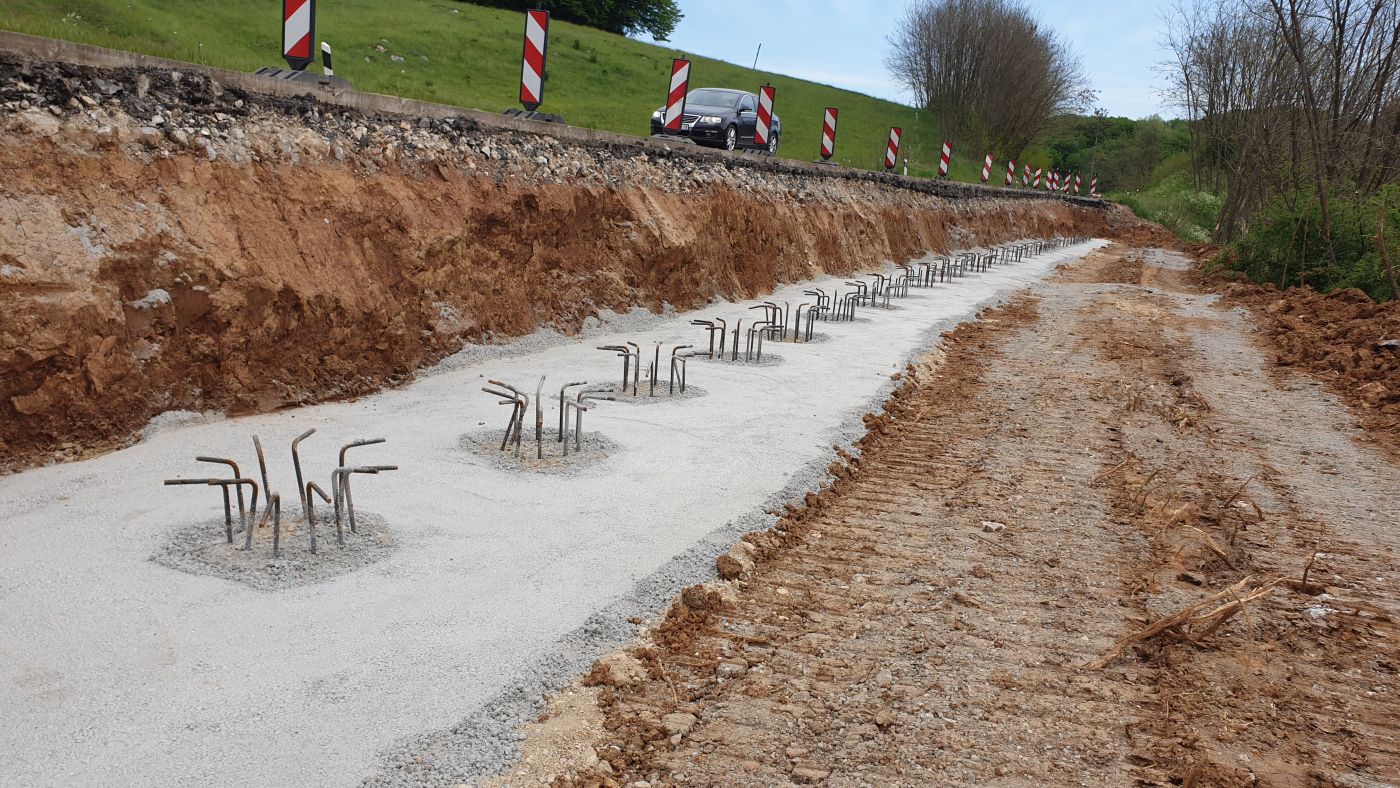Brebornica landslide remediation on the DC1 state road
The remediation works on the Brebornica landslide, located on state road DC1, section 011, at km 4+500 in Karlovac County, have been completed. For this project we carried out the engineering geological and geotechnical investigation and testing and made the main and detailed landslide remediation design.
During the execution of the works, we also carried out the complete supervision of the remediation. This included the analysis and verification of the situation in the field and the adjustment of the design solution.
The Brebornica landslide is located southwest of the village of Brebornica, on the state road DC1, section 011, at km 4+500. In the investigated part of the section, the DC1 road runs in a general northeast-southwest direction. The route of the road was made by filling the existing terrain, which formed embankments along the left and right edge of the road. The existing embankments were unprotected before the remediation, with no retaining structures. Along the right edge of the road, there were unorganized rainwater drainage channels, which diverted the road towards the existing concrete culvert. The elevations of the terrain range from approx. 155.0 to165.0m a.s.l., while the elevation of the road section covered by the works is approx. 165.0m a.s.l.
In December 2020, the earthquake in Banovina activated the sliding of already unstable road material and caused a crack to open of a height of approx. 2.0m. An inspection in the field has found that the landslide had progressed as was evident from the additional settling of material, accumulation in the reservoir in the southeast direction, seeping of water at the bottom of the reservoir, dredging of the terrain and leaning trees.
Geotehnical investigation and testing
For the main and detailed landslide remediation designs, we carried out engineering geological and geotechnical investigation and testing that included:
- geological and geotechnical prospecting of the terrain;
- exploratory drilling;
- engineering geological mapping of the terrain and determination of drilling cores;
- standard penetration tests (SPT);
- laboratory sample tests; and
- previous investigation data processing.
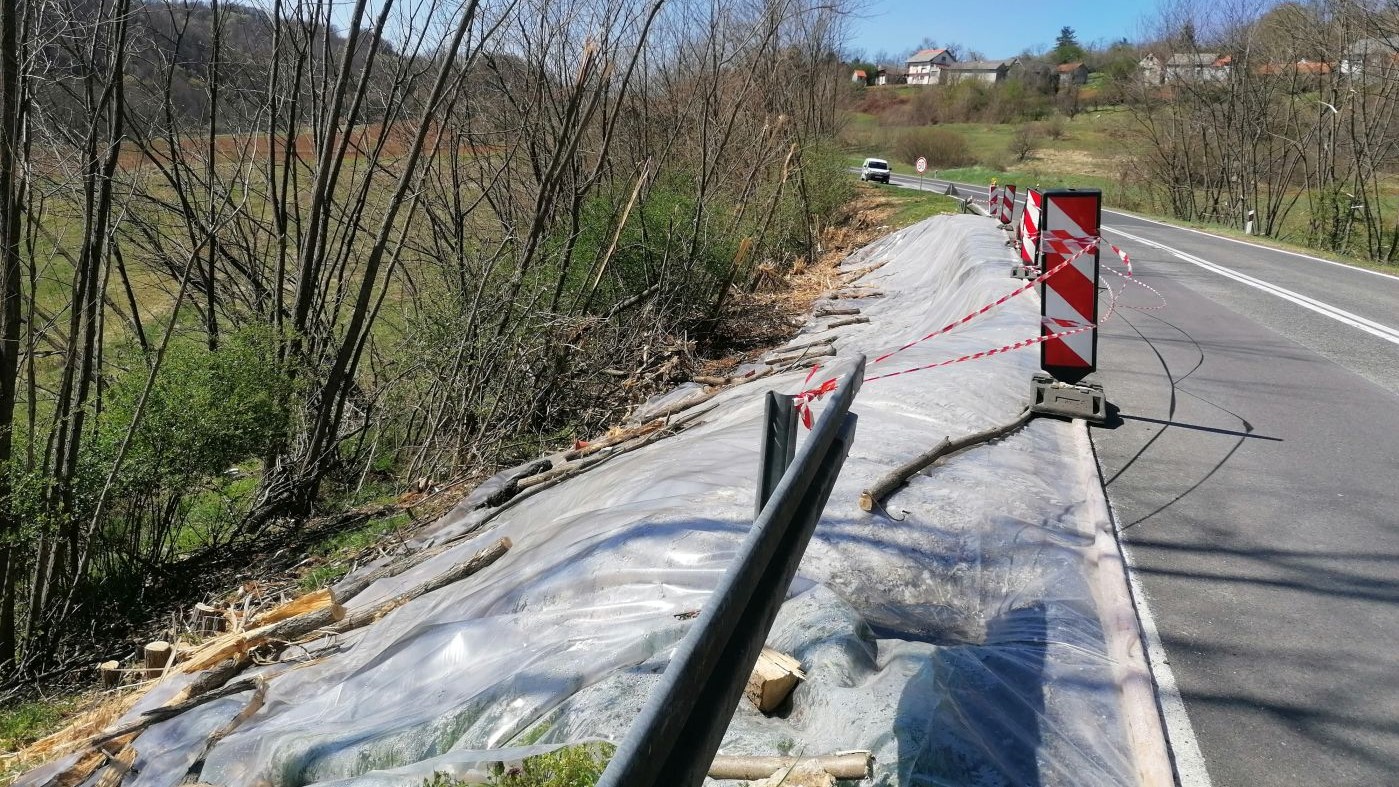
Remediation measures
As part of the Brebornica landslide remediation design on the state road DC1, section 011, at km 4+500, our design included the planned works aimed at increasing the overall stability of the slope, the construction of a rainwater drainage system, and the reconstruction of the road. Landslide remediation included the implementation of the following remediation measures:
– construction of pile wall from reinforced concrete drilled piles;
– construction of a drainage system; and
– road reconstruction.
Before the works could begin, the existing steel buffer fence and vegetation, bushes and trees were removed from the site.
After these were cleared, the positions of the slope protection measures based on project data were staked and marked (height and position).
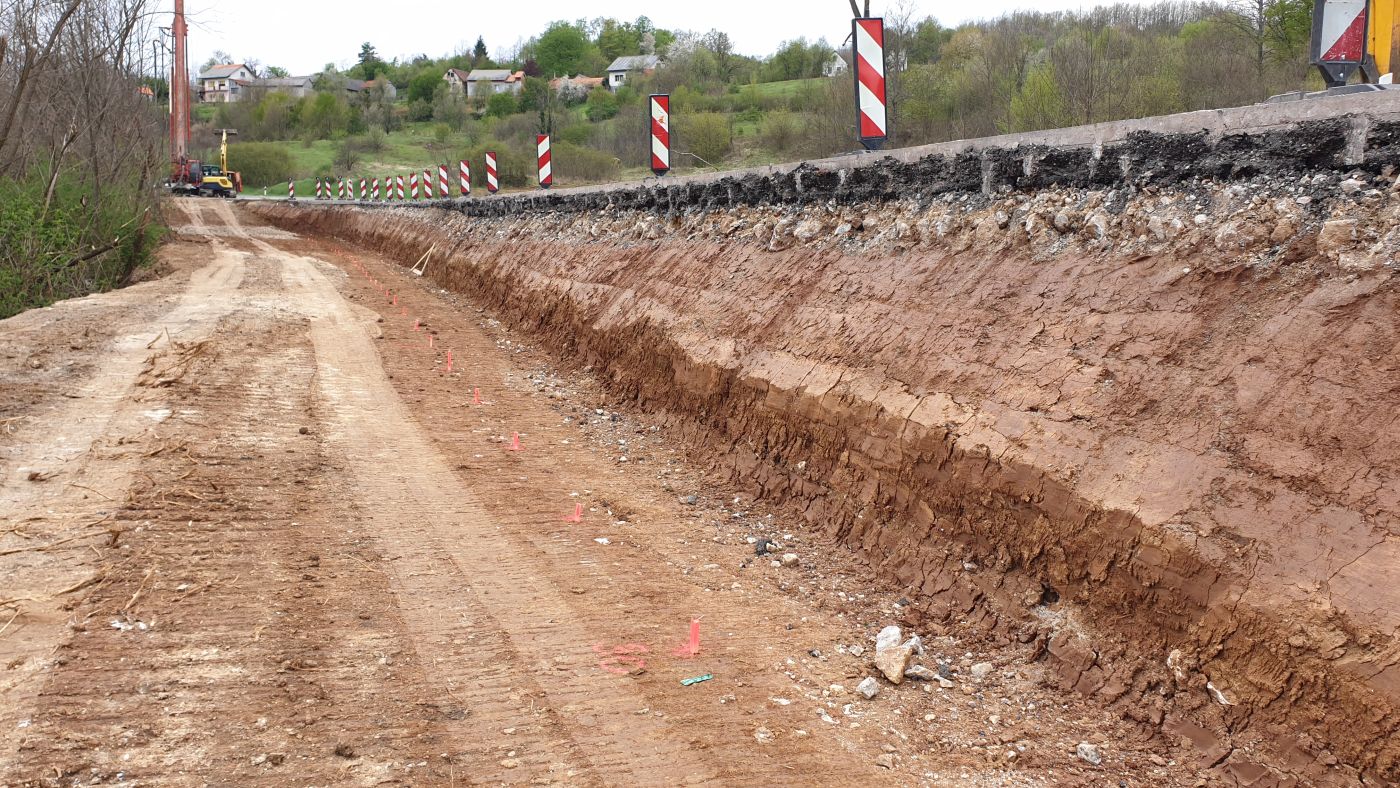
For the purpose of landslide remediation, a pile wall of reinforced concrete drilled piles of a length of L=8.0m was constructed in one row and at an axial distance of 2.0m, as well as reinforced concrete capping beam made of concrete of compressive strength class C 30/37. After the construction of the pile wall, backfilling with rock material was carried out behind the reinforced concrete capping beam,, and backfilling with mixed material from the excavation was carried out in front of the reinforced concrete capping beam.

The construction of the rainwater drainage system included the laying of a drainage PVC pipe with a nominal diameter of DN 250 mm behind the reinforced concrete capping beam, the installation of rock drainage material with a grain size of 4-32mm around the drainage pipe, the covering of the drainage material with geotextile, the construction of the drainage outlet from the culvert by installing rock blocks in concrete, the construction of reinforced concrete of the inflow shaft on the north side of the road, and the installation of concrete channels on both sides of the road for the purpose of draining rainwater from the landslide zone.

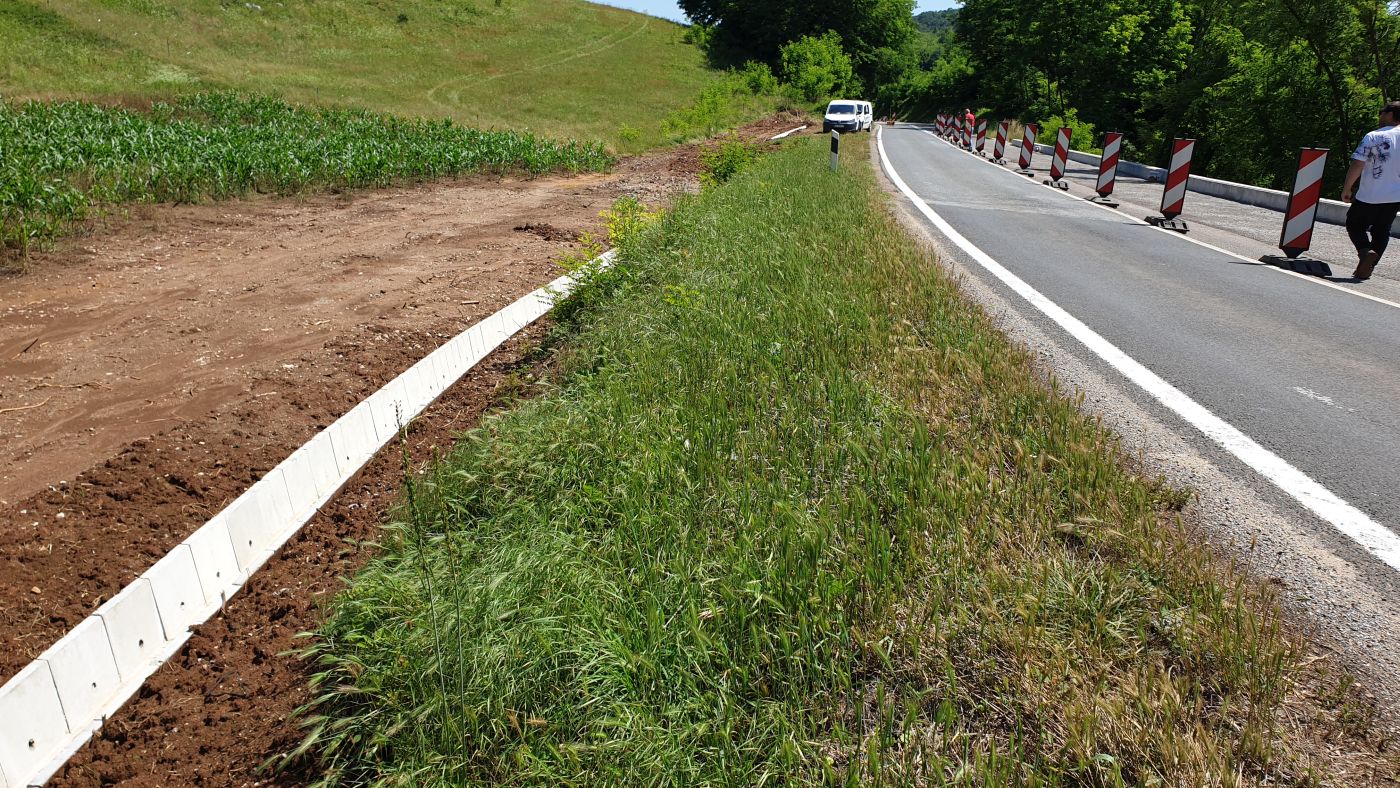
The works conducted as part of the road reconstruction include: the cutting and removal of asphalt layers of the existing road, the excavation of the existing road structure, the laying of geotextile at the bottom of the excavation, the building of a replacement layer of rock material, the building of a load-bearing layer of the road, the building of a bearing and wearing layer of asphalt pavement, the installation of a steel barrier on both sides of the road, and the installation of horizontal traffic signals.
Two inclinometers of a length of L=12.0m were installed for the monitoring of displacement during the road remediation. A total of ten measurements using the inclinometers are planned, one every three months.
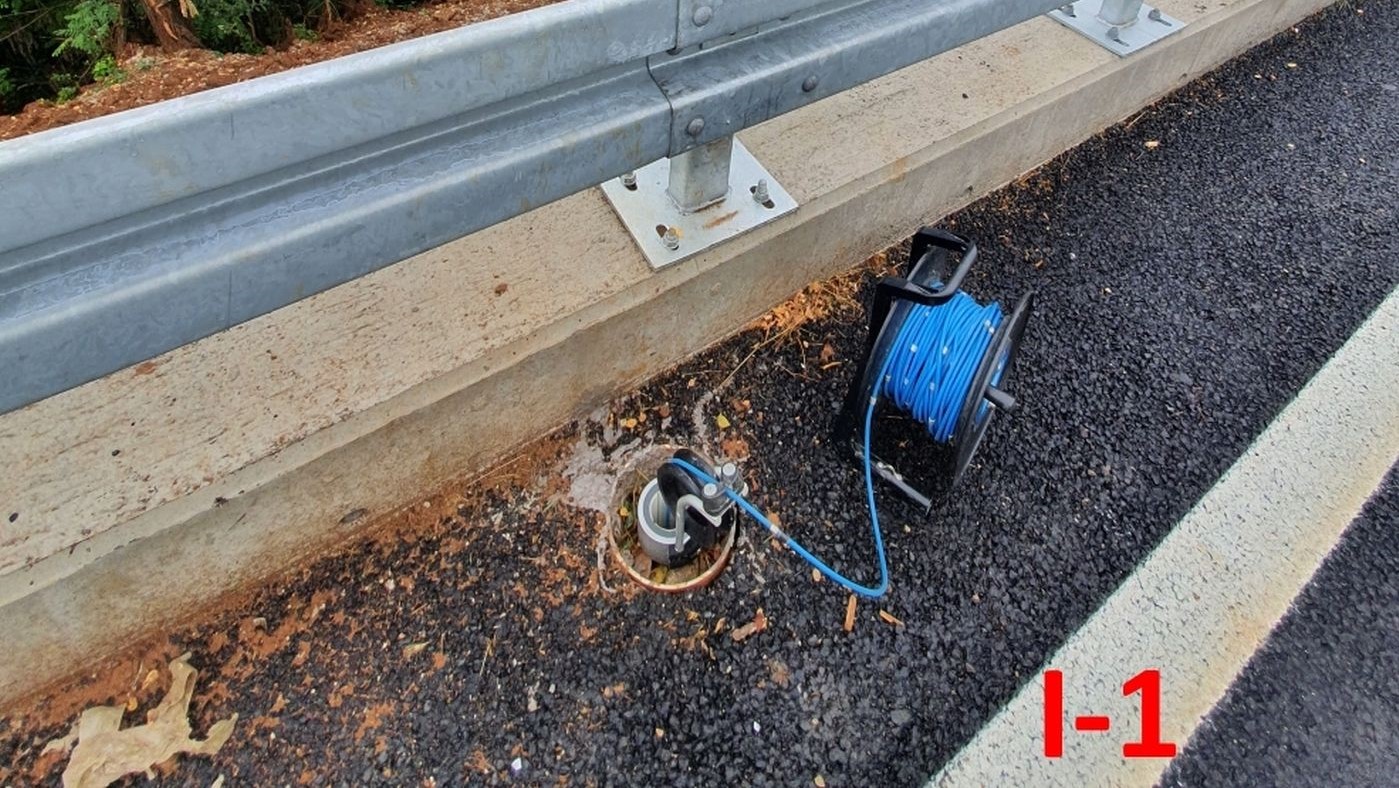
Conclusion
The execution of works at the site lasted approximately 2 months. The works were carried out within the contractual period and in accordance with the contractual obligations. The works were conducted in accordance with the contractual cost statement and the Investor’s requirements.
